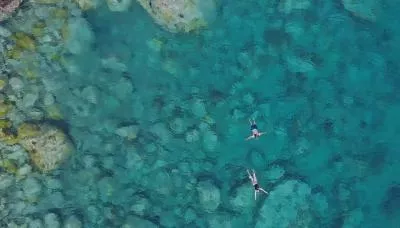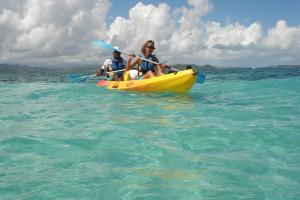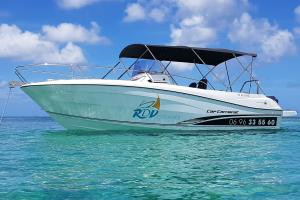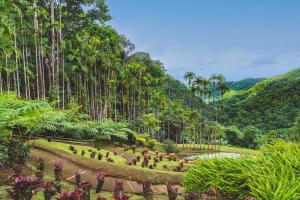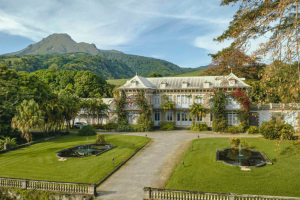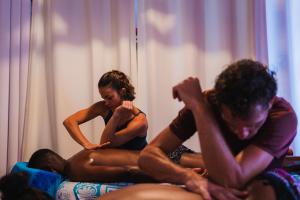
- Cruise
- Travel agency and TO
- Press
- MICE
a culture
History of Martinique
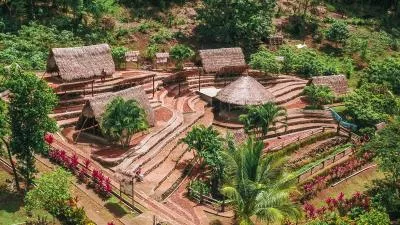
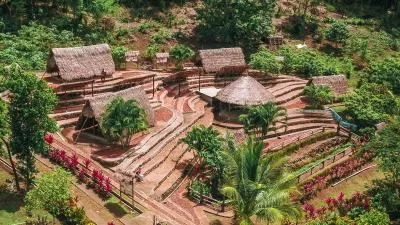
The Arawaks, the Island’s First Inhabitants
Although it is difficult to date the earliest human presence on the island precisely, the arrival of the Arawaks in Martinique is thought to date back to around the 1st century BC, or more than 2,000 years ago.
After braving the sea, cyclones and tidal waves, this Amerindian people from the Orinoco Delta (now Venezuela) discovered an island that was still in its wild state. Bringing with them their culture, farming practices and way of life, they settled on the island and lived in perfect harmony with nature. They fished and farmed, as well as making pottery and ceramics, leaving a lasting imprint on Martinique’s identity.
Around 900 years later, the Caribs, another people from the same region, landed on the island. Known for their warrior spirit, the Caribs soon conquered a large part of Martinique. After violent clashes between the two peoples, they eventually drove out the Arawaks, establishing their own presence on the island.
The Arrival of Europeans
On June 15, 1502 (Saint Martin’s Day), Christopher Columbus, sailing under the Spanish flag, was one of the first Europeans to make contact with the inhabitants of Martinique, then known as Madinina (the island of flowers) or Jouanacera (the island of iguanas).
However, the Spanish presence on the island was short-lived and of little significance. In 1635, the French took possession of the island, marking the beginning of French colonization in Martinique.
In fact, did you know that the British managed to take control of the island on several occasions, mainly during conflicts between the French and British empires? Despite these occupations, though, Martinique has always remained culturally and linguistically French.
French colonization
At the time, France was looking to establish colonies in the West Indies to exploit the region’s natural resources and wanted a strategic presence to extend its influence in the Caribbean Sea. The French soon realized that Martinique offered a favorable environment for a number of potentially lucrative crops. Its fertile soils, tropical climate and abundant rainfall made it particularly suitable for growing coffee, tobacco and sugarcane. Sugar plantations soon became the island’s main source of wealth. But to grow sugarcane, the French would resort to the massive use of forced labor, in the form of slaves, mainly from Africa.

A Painful Chapter
The History of Slavery in Martinique
Throughout this period of French colonization, thousands of men and women were captured, deported and sold into slavery to work on the plantations in inhumane conditions, including exhausting labor, punishments, mistreatment and the use of captivity. Slavery prospered in Martinique for centuries, tragically becoming the bedrock of the colonial economy.
It was a time of immeasurable suffering and injustice, but it was also a time of remarkable resilience. Despite living in oppression, the slaves managed to preserve certain elements of their traditions and cultural identity, contributing to the birth of our Creole culture.

In the transition to freedom, former slaves faced many challenges, such as precarious financial circumstances, ongoing discrimination and the rebuilding of identity and family ties. Some chose to remain on the plantations as wage laborers, while others sought to establish themselves on their own land or set up independent businesses.
From the early 1950s, the now-free slaves were gradually replaced by indentured laborers from other parts of the Caribbean like Guadeloupe, Dominica and Saint Lucia. Over time, the abolition of slavery gave rise to different waves of immigration from India, China and Syria. Each of these communities brought with it its own culture, traditions and language, contributing to the richness and cultural diversity of Martinique.
Today, the history of slavery in Martinique is commemorated and taught to raise awareness of the injustice of this period and to bring attention to protecting human rights and cultural diversity. Martinique continues to fight for a more inclusive and egalitarian society.
An Island Enriched by its Past
Martinique today
Over the last few decades, Martinique has undergone significant political changes.
On March 19, 1946, after much parliamentary debate, Martinique became a French department in its own right, with an administrative and legislative status similar to that of departments in mainland France. Departmentalization enabled Martinique to benefit from economic and social development measures, but also led to debates on cultural assimilation and Martinican identity.
In 2010, the people of Martinique voted in a referendum to create a single local authority. This new organization restructured the island’s institutions and political powers, giving Martinique greater decision-making autonomy.
Each of these milestones has left an indelible mark on the island, some more painful than others, but often rich in lessons. Today, the island is an incredibly rich, generous and authentic place.

Martinique with a big M


